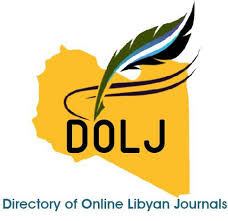Clinical Applications of Telemedicine in Paediatric Emergency Care: A Systematic Review Study
DOI:
https://doi.org/10.54361/LJMR.19.2.01Keywords:
telemedicine, pediatric emergency, rural healthcare, tele-triage, critical care, healthcare accessAbstract
Background: Access to timely and specialized care is critical in pediatric emergencies, yet many rural and underserved areas lack pediatric emergency medicine (PEM) specialists. Telemedicine (TM) offers a potential solution by enabling real-time consultation and decision support remotely.
Objective: To evaluate the effectiveness of telemedicine in managing critically ill pediatric patients in emergency settings, with a focus on improving access in rural and resource-limited environments
Materials and Methods: A narrative literature review was conducted using PubMed, Scopus, Web of Science, and Google Scholar. Studies published from January 2014 to June 2023 were screened for relevance. Twenty-five studies were included, covering various telemedicine modalities and outcomes related to pediatric emergency care.
Results: The findings suggest that TM improves access to pediatric specialists, enhances triage and diagnostic accuracy, reduces unnecessary interfacility transfers, and provides cost-effective alternatives to conventional care. Studies also highlighted implementation barriers, including provider resistance, infrastructure limitations, and variability in adoption
Conclusion: Telemedicine demonstrates clear benefits in pediatric emergency care, particularly in underserved settings. Despite challenges, TM is a promising adjunct to traditional emergency systems.
Broader adoption and further outcome-based research are needed to optimize its role in improving pediatric emergency care delivery.
Downloads
References
1. Varma S, Schinasi DA, Ponczek J, Baca J, Simon NJ, Foster CC, Davis MM, Macy M. A retrospective study of children transferred from general emergency departments to a pediatric emergency department: which transfers are potentially amenable to telemedicine?. The Journal of pediatrics. 2021 Mar 1; 230: 126-32.
2. Saidinejad M, Barata I, Foster A, Ruttan TK, Waseem M, Holtzman DK, Benjamin LS, Shahid S, Berg K, Wallin D, Atabaki SM. The role of telehealth in pediatric emergency care. JACEP Open. 2023 Jun 1;4 (3):e12952.
3. Harvey JB, Yeager BE, Cramer C, Wheeler D, McSwain SD. The impact of telemedicine on pediatric critical care triage. Pediatric Critical Care Medicine. 2017 Nov 1; 18(11):e555-60.
4. Totten AM, Womack DM, Griffin JC, McDonagh MS, Davis-O’Reilly C, Blazina I, Grusing S, Elder N. Telehealth-guided provider-to-provider communication to improve rural health: A systematic review. Journal of telemedicine and telecare. 2024 Sep; 30(8):1209-29.
5. Murtha TD, Hooper M, Canarie MF. Telemedicine in Pediatric Critical Care: At Home and Abroad. Current Treatment Options in Pediatrics. 2017 Sep;3:208-20
6. Beyer A, Moon K, Penndorf P, Hirsch T, Zahn-Tesch U, Hoffmann W, Lode HN, van den Berg N. Triage through telemedicine in paediatric emergency care—Results of a concordance study. Plos one. 2022 May 26;17(5):e0269058.
7. Flaherty KE, Klarman MB, Cajusma Y, Schon J, Exantus L, de Rochars VM, Baril C, Becker TK, Nelson EJ. A nighttime telemedicine and medication delivery service to avert pediatric emergencies in Haiti: an exploratory cost-effectiveness analysis. The American Journal of Tropical Medicine and Hygiene. 2022 Feb 21;106(4):1063.
8. Gattu R, Teshome G, Lichenstein R. Telemedicine applications for the pediatric emergency medicine: a review of the current literature. Pediatric emergency care. 2016 Feb 1;32(2):123-30.
9. Kim JW, Tiyyagura G, Langhan M. A qualitative analysis of general emergency medicine providers' perceptions on pediatric emergency telemedicine. Pediatric emergency care. 2019 Dec 1;35(12):856-61.
10. Marcin JP, Sauers-Ford HS, Mouzoon JL, Haynes SC, Dayal P, Sigal I, Tancredi D, Lieng MK, Kuppermann N. Impact of tele-emergency consultations on pediatric interfacility transfers: a cluster-randomized crossover trial. JAMA network open. 2023 Feb 1;6(2):e2255770-.
11. Mitra A, Veerakone R, Li K, Nix T, Hashikawa A, Mahajan P. Telemedicine in paediatric emergency care: A systematic review. Journal of Telemedicine and Telecare. 2023 Sep;29(8):579-90.
12. Rahim MJ, Ghosh P, Brisendine AE, Yang N, Roddy R, Broughton MJ, Kinzer A, Wingate MS, Sen B. Telehealth utilization barriers among Alabama parents of pediatric patients during COVID-19 outbreak. BMC Health Services Research. 2023 Jun 27;23(1):693.
13. Rosenthal JL, Sauers-Ford HS, Snyder M, Hamline MY, Benton AS, Joo S, Natale JE, Plant JL. Testing pediatric emergency telemedicine implementation strategies using quality improvement methods. Telemedicine and e-Health. 2021 Apr 1;27(4):459-63.
14. Severini RD, Oliveira PC, Couto TB, Simon H, Andrade AP, Nanbu DY, Farhat SC, Schvartsman C. Fast, cheap and feasible: Implementation of pediatric telemedicine in a public hospital during the Covid-19 pandemic. Jornal de Pediatria. 2022 Apr 20;98(02):183-9.
15. Mateus LA, Law MP, Khowaja AR, Orlando E, Pace A, Roy M, Sulowski C. Examining perceptions of a telemedicine network for pediatric emergency medicine: a mixed-methods pilot study. Frontiers in Digital Health. 2023 May 26; 5:1181059…
16. Siew L, Hsiao A, McCarthy P, Agarwal A, Lee E, Chen L. Reliability of telemedicine in the assessment of seriously ill children. Pediatrics. 2016 Mar 1;137(3).
17. Sauers Ford HS, Hamline MY, Gosdin MM, Kair LR, Weinberg GM, Marcin JP, Rosenthal JL. Acceptability, usability, and effectiveness: a qualitative study evaluating a pediatric telemedicine program. Academic Emergency Medicine. 2019 Sep;26(9):1022-33.
18. Weidner K, Lowman J, Fleischer A, Kosik K, Goodbread P, Chen B, Kavuluru R. Twitter, telepractice, and the COVID-19 pandemic: a social media content analysis. American Journal of Speech-Language Pathology. 2021 Nov 4;30(6):2561-71.
19. Schinasi DA, Atabaki SM, Lo MD, Marcin JP, Macy M. Telehealth in pediatric emergency medicine. Current Problems in Pediatric and Adolescent Health Care. 2021 Jan 1;51(1):100953.
20. Du Toit M, Malau-Aduli B, Vangaveti V, Sabesan S, Ray RA. Use of telehealth in the management of non-critical emergencies in rural or remote emergency departments: a systematic review. Journal of telemedicine and telecare. 2019 Jan;25(1):3-16.
21. Waltzman ML, Monuteaux MC, Kleinnman M, Nigrin D, Gruskin K. Bridging the Gap with Telemedicine: Community Emergency Department to Tertiary Care Pediatric Intensive Care. Emerg Med. 2018;1(1):1-2.
22. Boggs KM, Glew D, Rahman KN, Gao J, Boyle TP, Samuels-Kalow ME, Sullivan AF, Zachrison KS, Camargo Jr CA. Pediatric telehealth use in US emergency departments in 2019. Telemedicine and e-Health. 2023 Apr 1;29(4):551-
23. Uscher-Pines L, Kahn JM. Barriers and facilitators to pediatric emergency telemedicine in the United States. Telemedicine and e-Health. 2014 Nov 1;20(11):990-6.
24. Rowther AA, Mehmood A, Razzak JA, Atiq H, Castillo-Salgado C, Saleem HT. “You can only help them save the patient once they trust you”: Clinician perspectives and theories of use of a pediatric emergency teleconsultation
Downloads
Published
Issue
Section
License
Copyright (c) 2025 Fathia.H.Ben Saleh, Zubaida. I. Alghaeed (Author)

This work is licensed under a Creative Commons Attribution-NonCommercial-NoDerivatives 4.0 International License.
Open Access Policy
Libyan journal of medical Research (LJMR).is an open journal, therefore there are no fees required for downloading any publication from the journal website by authors, readers, and institution.
The journal applies the license of CC BY (a Creative Commons Attribution 4.0 International license). This license allows authors to keep ownership f the copyright of their papers. But this license permits any user to download , print out, extract, reuse, archive, and distribute the article, so long as appropriate credit is given to the authors and the source of the work.
The license ensures that the article will be available as widely as possible and that the article can be included in any scientific archive.
Editorial Policy
The publication of an article in a peer reviewed journal is an essential model for Libyan journal of medical Research (LJMR). It is necessary to agree upon standards of expected ethical behavior for all parties involved in the act of publishing: the author, the journal editorial, the peer reviewer and the publisher.
Any manuscript or substantial parts of it, submitted to the journal must not be under consideration by any other journal. In general, the manuscript should not have already been published in any journal or other citable form, although it may have been deposited on a preprint server. Authors are required to ensure that no material submitted as part of a manuscript infringes existing copyrights, or the rights of a third party.
Authorship Policy
The manuscript authorship should be limited to those who have made a significant contribution and intellectual input to the research submitted to the journal, including design, performance, interpretation of the reported study, and writing the manuscript. All those who have made significant contributions should be listed as co-authors.
Others who have participated in certain substantive aspects of the manuscript but without intellectual input should only be recognized in the acknowledgements section of the manuscript. Also, one of the authors should be selected as the corresponding author to communicate with the journal and approve the final version of the manuscript for publication in the LJMR.
Peer-review Policy
- All the manuscripts submitted to LJMR will be subjected to the double-blinded peer-review process;
- The manuscript will be reviewed by two suitable experts in the respective subject area.
- Reports of all the reviewers will be considered while deciding on acceptance/revision or rejection of a manuscript.
- Editor-In-Chief will make the final decision, based on the reviewer’s comments.
- Editor-In-Chief can ask one or more advisory board members for their suggestions upon a manuscript, before making the final decision.
- Associate editor and review editors provide administrative support to maintain the integrity of the peer-review process.
- In case, authors challenge the editor’s negative decision with suitable arguments, the manuscript can be sent to one more reviewer and the final decision will be made based upon his recommendations.











